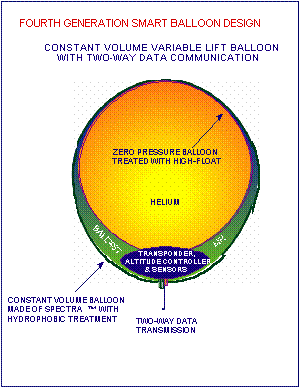Goals:
-
To explore the structure of the hurricane boundary layer (BL) during landfall
using WSR-88D radar data using a novel instrumented "smart" balloon with
buoyancy control.
Co-Investigators:
- Gary Barnes, University of Hawaii
Funding:
$197,000 (plus $270,067 to NOAA)
Contact:
businger@hawaii.edu
(808) 956-2569
Expected Results:
-
Increase understanding of the energy transfer from the ocean to the atmosphere in the hurricane environment.
| Importance:
- Development of hurricane balloon will be a major technological advance for collection of data in hurricanes.
-
Project will increase the accuracy of surface energy flux estimates used
in hurricane numerical models. These models are one of the primary
resources for hurricane forecasting
Effort (Month)
| 1-6
| 7-12
| 13-18
| 18-24
|
| |
Create database of secondary circulation characteristics
| ----0------------
| Examine VAD profiles
| ----------0------
| Comparison between LES Modeling and statistical results
| ----------0-----0
| Implement momentum flux calculations into hurricane models
| ----------------0 |
|

